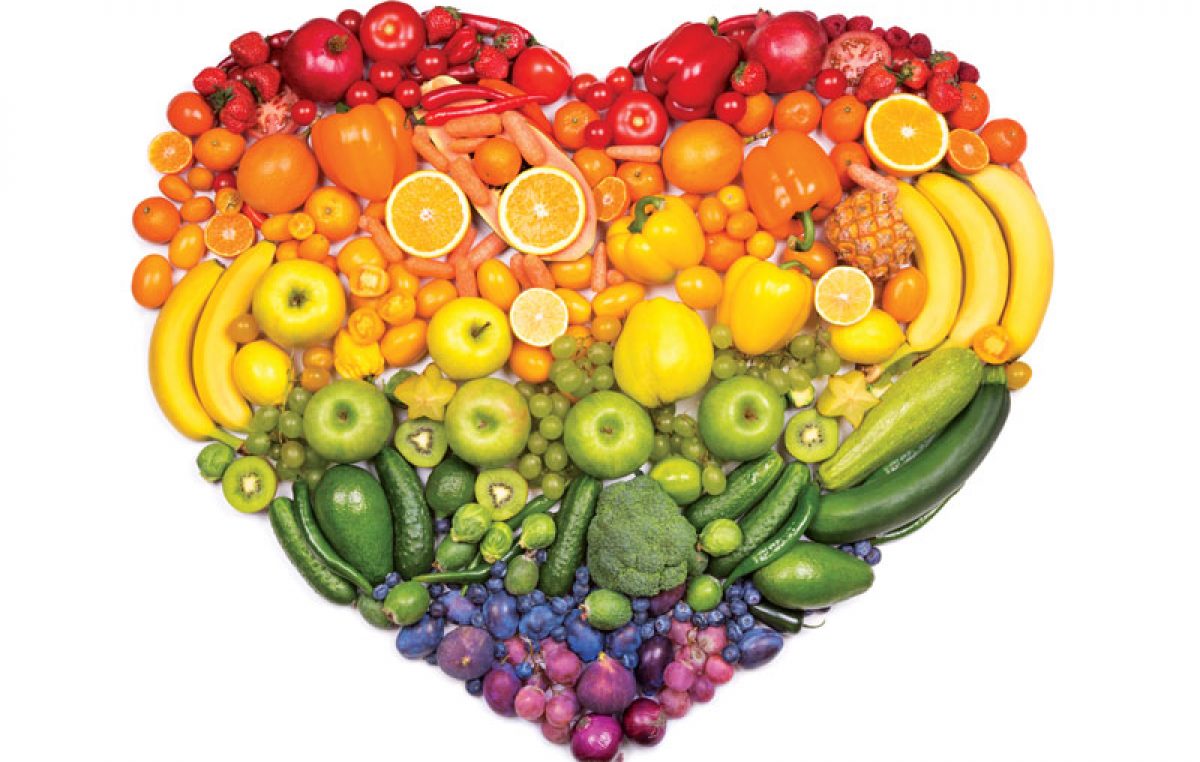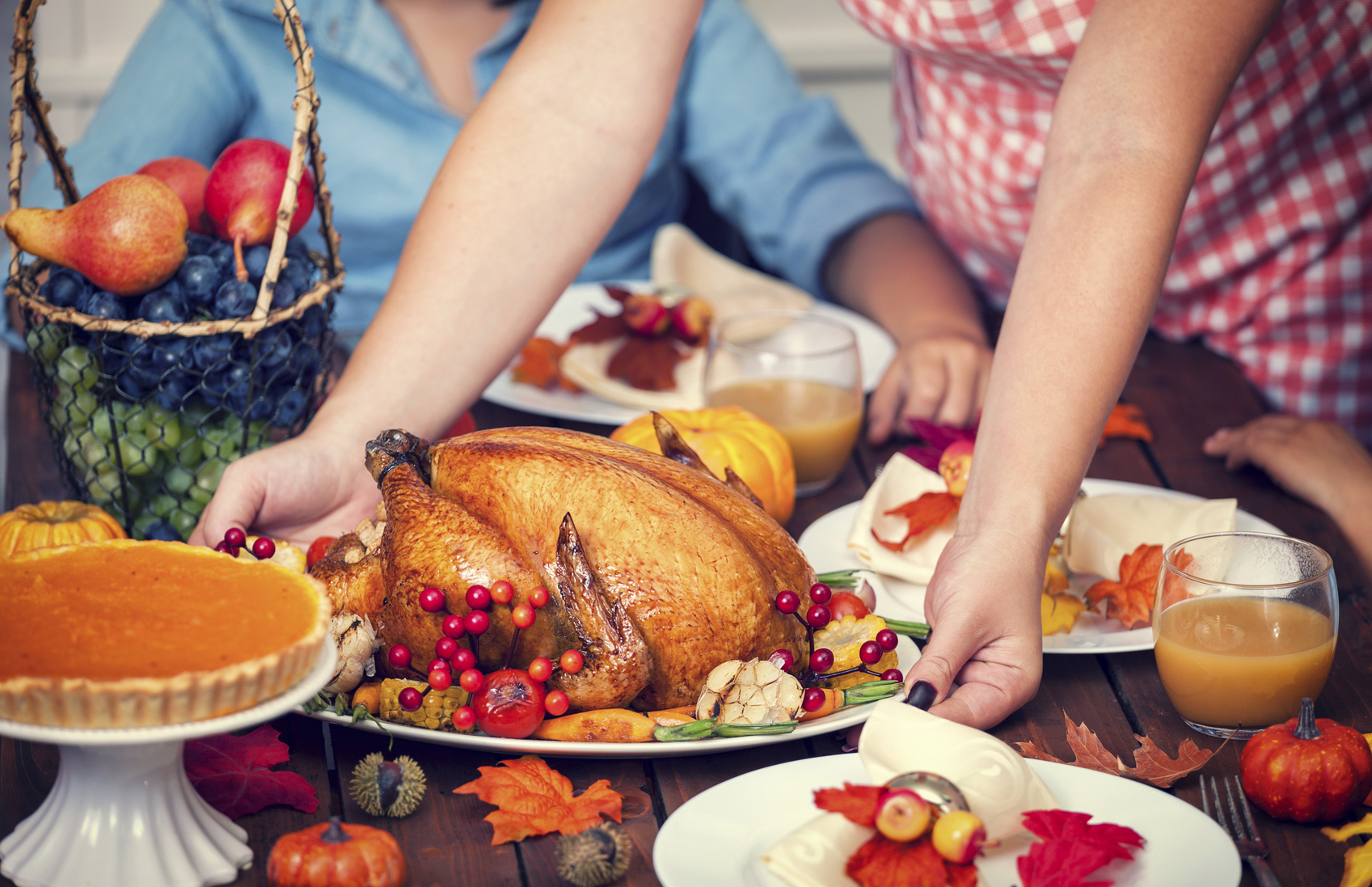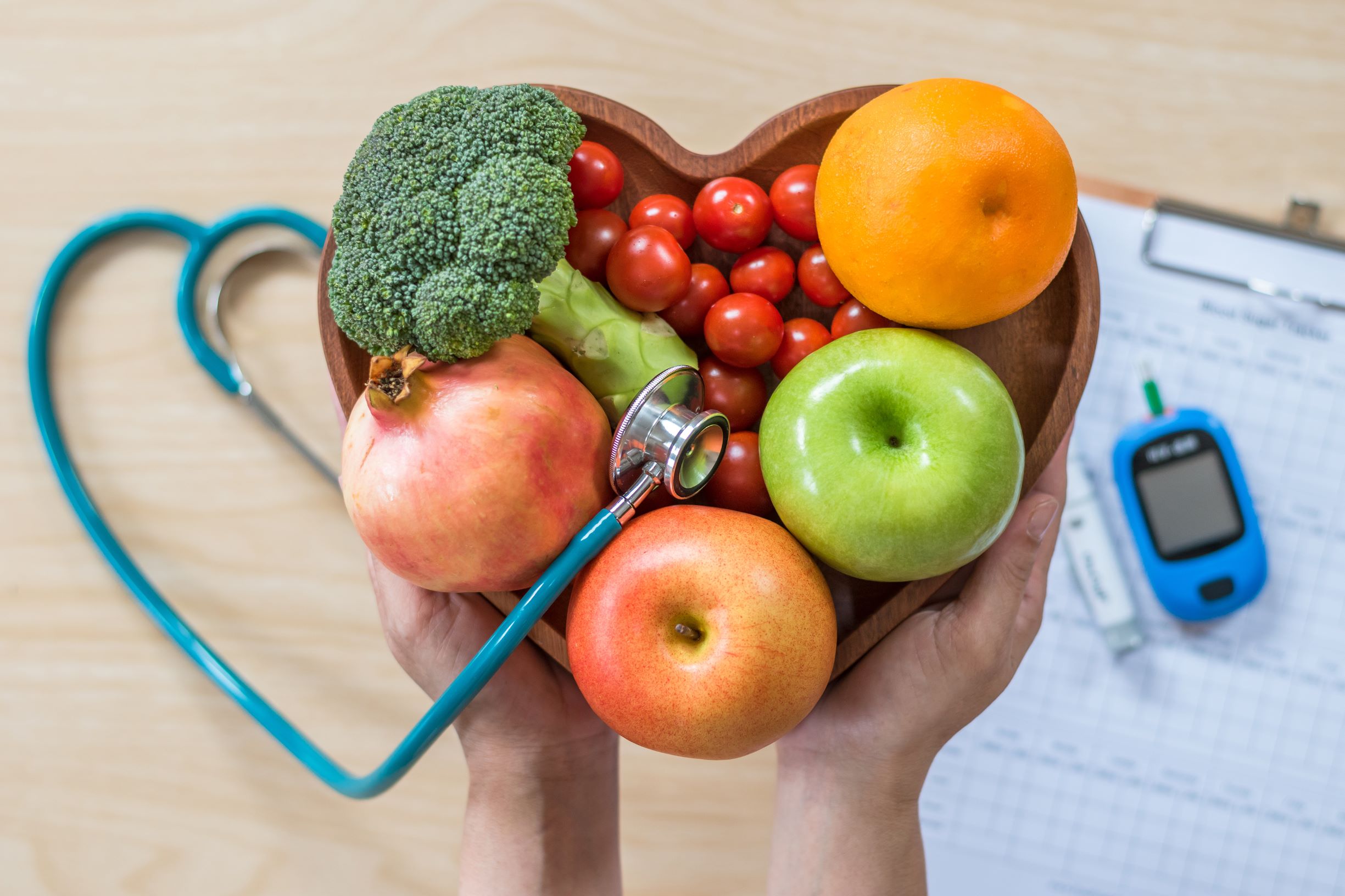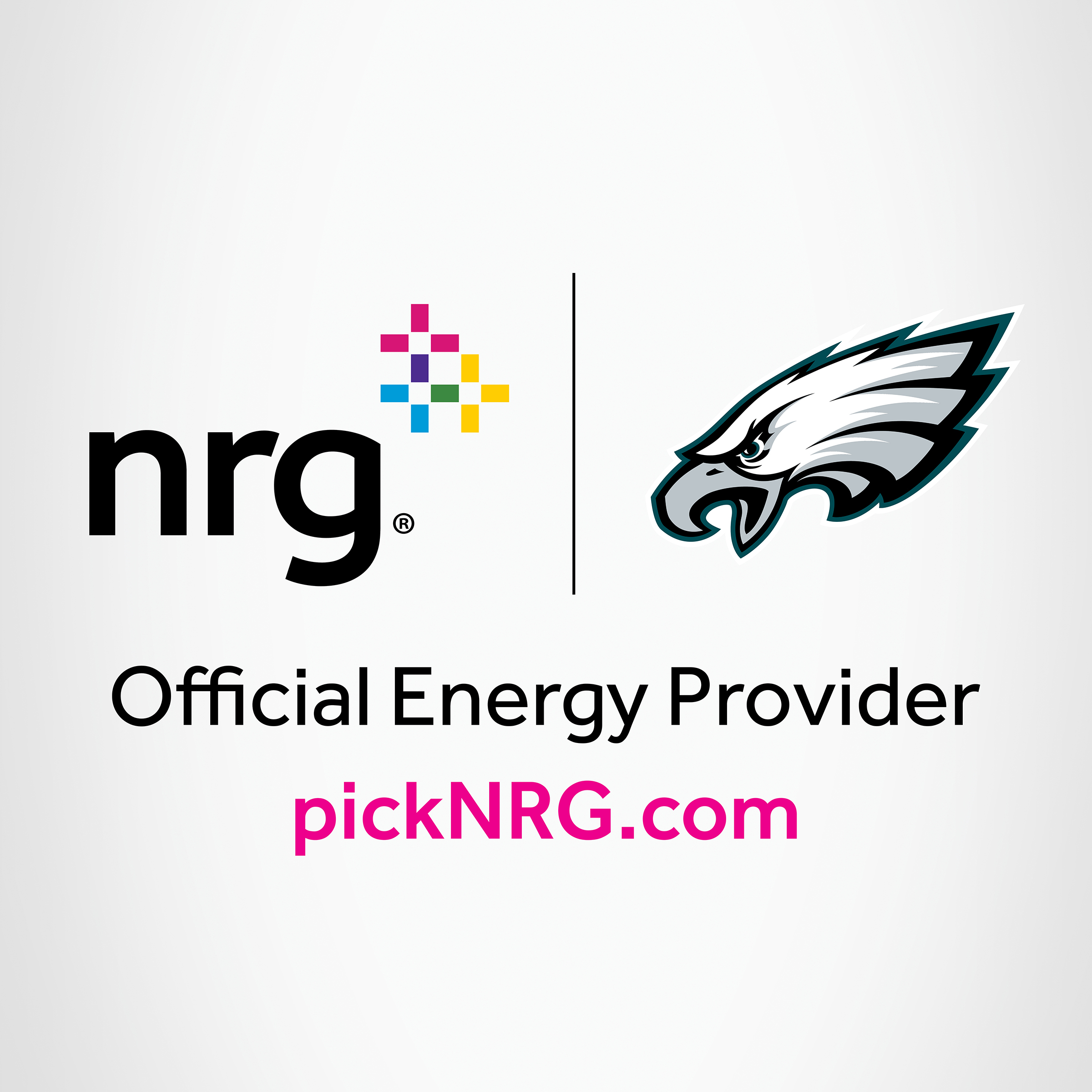Category: Uncategorized
Keep Your New Years Resolutions Beyond January
Every New Years, we create resolutions in hopes of improving our health or making positive changes to our lives. Often our resolutions, while well-meaning, don’t last beyond the month of January. Deciding to improve one’s health is a good first step. Follow our tips below to ensure your resolutions stick well beyond this month.
Avoid a fad diet
Fad diets have gained large popularity over the last few years. Celebrities often use their platforms to market these diets and products. Unfortunately, a fad diet’s success is just that – a short lived fad. No one wants to see their hard work and progress go right down the drain. Some popular fad diets include: the Keto diet, the Carnivore diet, and any diet labeled with “detox” or “cleanse”. These diets can be very restrictive of the nutrients that your body needs. There are some lifestyle diets, however, that emphasize balancing macronutrients and are more suitable to follow long term. These include the DASH diet and the Mediterranean Diet. If a diet fits into your lifestyle make sure to speak with a Registered Dietitian so they can help you successfully achieve your goals without compromising your health.
Subtle modifications
Instead of drastic diet modifications make subtle changes that alter your lifestyle without making major changes. These changes should take into consideration not having a substantial effect on your schedule or finances to avoid any extra work on your part. For example, make meatloaf with half ground beef and half ground turkey. Want to take it up a notch? Add a cup of spinach into your meatloaf for a tasty layer of greens in the middle. Simple swaps can work with various type of meals and recipes. Find an idea and make it your own!
Never underestimate the power of veggies!
Veggies are not only colorful, but nutrient dense foods that are packed with vitamins, minerals, and fiber. Vitamins and minerals help boost the immune system while fiber helps to regulate bowel function and lower your cholesterol. Consuming the recommended amount of vegetables daily has also been shown to reduce the risk of developing chronic illnesses such as: diabetes, heart disease, and certain cancers. The recommended intake for vegetables is 2 to 3 cups per day. Color your New Year, by following some of these tips to help increase your daily vegetable intake:
- Add vegetables into sauces – This can include pureeing butternut squash into your homemade mac n’ cheese or chopping up mushrooms, peppers, and spinach to your tomato based sauce
- Replace pasta with your favorite vegetable – Spiralizers are all the craze, but all you need is a standard peeler to use on summer squash to make long noodle-like strands. Cook with crushed tomatoes, a lean meat, and your favorite seasonings. If labor is a concern, spaghetti squash is also an option. To prepare cut the squash in half, lightly drizzle olive oil, sprinkle pepper, and garlic powder, and cook in the oven at 375° for 40 minutes. Dish it onto your plate and top with turkey meatballs, and another colorful vegetable of your choice
- Sneak vegetables into your favorite dinner meal – It is easy to add vegetables into a lean ground meat. Doing this not only increases the nutrients, but also helps moisten the meat and add additional flavor to the meal. Some examples include: adding a half cup of peeled zucchini and carrots into a ground turkey or lean beef mixture and use for meatloaf, meatballs, or lasagna. Adding additional vegetables like mushrooms and chopped eggplant are especially delicious in a lasagna. You can also spice up your next burger by adding diced mushrooms and spinach. The choices are endless!
Healthy Twist on Taco Rice

Makes ~4 servings
1/2 cup uncooked rice
1 cup frozen cauliflower rice (may thaw for quicker cooking)
Half onion ( approx. ¼ c chopped)
1-2 tablespoon olive oil
1 tablespoon low sodium taco seasoning (or use ¼ tsp of each: cumin, chilli powder, garlic powder)
Choice of low sodium broth (vegetables, chicken, beef etc.)
¾ cup canned beans ( pinto, black beans etc)
1 medium tomato diced optional
½ avocado diced optional
½ c shredded cheese optional
1. Prepare rice according to directions but substitute half of the water with your choice of broth and under-cook by 2 mins.
2. While the rice is cooking sauté onion on low-med heat with 1-2 tbsp olive oil until translucent approximately 8 mins
3. Add cauliflower rice to pan, cover and cook through for ~ 4-8 minutes
4. Combine cauliflower/onion mix into pot with rice
5. Add taco seasoning and beans, cook over low heat covered for an additional 5 minutes
6. Top with optional toppings if desired and Enjoy!
This can be paired as a side with an entrée or topped with grilled chicken, shrimp or tofu along with a side salad for a complete meal.
January Energy Tip from NRG
RESOLVE TO BE MORE ENERGY EFFICIENT IN 2019
When making new year’s resolutions, people probably don’t think about using less energy in their home. But using less energy can benefit not just you, but your neighbors, your town, the entire grid.
- Use LED lights when possible. According to the Energy Department, residential LEDs — especially ENERGY STAR rated products — use at least 75% less energy, and last 25 times longer, than incandescent lighting. The investment you make now will more than pay off over the long term.
- Check your air vents regularly. The air in your home should be distributed effectively. If something is obstructing the vents, it can make the system work harder, thus using more energy.
- Weather strip around your doors and windows. Stop heat from escaping during by sealing any cracks and holes that might exist. You’d be amazed at the amount of heat that’s lost via small cracks and holes.
- When making major purchases of appliances in the new year, be sure to get energy star rated appliances. They can bring you big savings over the lifetime of the appliance.
- Use an electronic power strip for all your electronics like TVs, desktops, cable box, etc. That way, you turn off all appliances by turning off just one device.
- Lower your thermostat. Better yet, consider getting a Smart Thermostat.
If possible set your thermostat to no warmer than 68°F! The U.S. Department of Energy says you could save about 1% on heating usage for every degree you lower your thermostat over an eight-hour period. Even 70 instead of 72 can make a difference.
- In winter, keep your blinds open during the day to let the sun heat your home naturally. It’s the opposite during the summer. Close your curtains during the day to prevent the sun from making your home even warmer, making your A/C work even harder.
BONUS TIP: One thing to also consider. Pennsylvania and New Jersey are electricity choice states, which means consumers don’t have to settle for the one price fits all the utilities offer. People have a lot of choices. Many companies, like NRG, offer a variety of electricity plans that suit a family’s lifestyle and electricity usage, including fixed price plans that allow customers to lock-in their supply price for a set period, which can protect them from potential unpredictable energy price hikes due to heat waves, cold snaps, and other factors. Some plans offer you renewable energy, which can basically offer many of the benefits of solar or wind, without having solar panels on your roof.
Be Healthful at the Holidays
What do you think of when you think about the holidays? You probably think of family, friends, presents, but most of the time the holidays are associated with an abundance of delicious foods. Keeping a healthful diet can be challenging during the holidays; studies have even shown that the average American gains approximately three to five pounds during the winter months due to the holidays. It might not sound like a lot, but these pounds tend to be the ones that stick throughout the rest of the year. It is important to be aware of some small healthful changes that can easily be made to your holiday meals and to keep mindful eating in your thoughts. Some helpful tips when cooking during the holidays include reducing the fat, sugar, and salt, while increasing the fiber to some of your favorite holiday dishes.
Reduce fat:
To reduce some of the fat content, try reducing the added fat by half or using a substitute for the remaining half such as applesauce or banana when baking. When choosing sour cream or milk at the grocery store, opt for the low-fat versions. Skimming excess fat from the top of gravies and draining excess fat from cooked meats are simple ways to cut down on fat as well.
Reduce sugar:
Reducing the amount of sugar can also be as simple as adding about ¼ cup less sugar and adding extra spices to your favorite baked good recipe.
Reduce salt:
If you use canned or frozen vegetables for cooking, choose vegetables with no added salt or rinse the vegetables before cooking to remove some of the excess salt. When using store-bought broth or soup, make sure to purchase a low-sodium or no salt version and add salt to your own desire.
Increase fiber:
To increase fiber and other nutrients, try switching out refined flours with whole-wheat flours such as brown rice, whole-wheat bread, whole-wheat pasta, or oatmeal. Vegetables and fruits also provide fiber and can be added to dishes like chili, spaghetti sauce, casseroles, stews, salads, muffins, and desserts.
Healthier cooking techniques:
When cooking your holiday meals, use healthier cooking techniques that will help reduce the fat content such as nonstick pans, baking, grilling, or poaching.
Mini Pumpkin Spice Oatmeal Muffins

National Diabetes Month
The month of November is American Diabetes Month. Diabetes is a disease that occurs when the pancreas cannot produce enough insulin to lower the sugar levels in your bloodstream. If these sugars build up, they can cause serious health problems down the road. Currently, 30.3 million people in the United States have diabetes with type 2 diabetes being the most common. One out of ten Americans are living with diabetes, and one in four do not even know they have it. Therefore, being aware of the symptoms and risk factors for diabetes is crucial. Some of the symptoms of type 2 diabetes include: blurred vision, numbness in the hands or feet, sores that do not heal, unexplained weight loss, and increased thirst, urination, or hunger. However, these symptoms are not always present. The risk factors that increase your chances of developing type 2 diabetes are an age of 45 or older, a family history of type 2 diabetes, a weight status of overweight or obese, and a medical history of heart disease, stroke, or hypertension.
The health factors associated with type 2 diabetes are called the ABCs of diabetes:
- A1c: Your A1c is the average amount of sugar in your blood over the past 2-3 months. An A1c >5.7% indicates prediabetes, or a condition that puts you at a higher risk for developing diabetes. An A1c of >6.5% indicates diabetes.
- Blood pressure: Your blood pressure is a measurement of how blood flows through your veins. A blood pressure greater than 130/80 is high.
- Cholesterol: Your cholesterol is split into two categories: HDL, which is good cholesterol, and LDL, which is bad cholesterol. A value over 100 for LDL means high cholesterol. This can be from an unhealthy diet, not enough exercise, or smoking.
Be sure to discuss your A1c, blood pressure, and cholesterol with you doctor to take the appropriate measures.
If you have multiple risk factors, have prediabetes, or have diabetes, it is important to properly manage your conditions to avoid health complications. Following a healthful, balanced diet with portioned carbohydrates and sugars will help keep your diabetes in check. Carbohydrates are one of the three main energy sources in food. The other two sources are protein and fat. Some sources of carbohydrates include: bread, pasta, rice, starchy vegetables, fruits, milk, and yogurt. Carbohydrates are transformed into glucose when digested and exist in your blood stream as blood sugar. When planning meals at home, try to portion out the carbohydrate foods you eat. A rule of thumb is to make 25% of your plate carbohydrates such as corn, sweet potatoes, rice, pasta, or tortillas. Another 25% of your plate should be lean protein such as beans, fish, eggs, chicken, or turkey, and the remaining 50% should be non-starchy vegetables such a: carrots, cabbage, broccoli, tomatoes, peppers, or collard greens. Along with keeping a balanced diet, those at risk or those with diabetes should also try to exercise at least three times per week, take prescribed medications, maintain a healthy weight, and check blood sugars as directed by their doctor.

Cauliflower Rice
Ingredients:
1 large head cauliflower, separated in to florets
3 tbsp. olive oil
1 medium onion, diced
Dash of salt
2 tbsp. fresh parsley
Juice of ½ lemon
Directions:
- Break up the cauliflower florets and pulse in a food processor until the mixture resembles a crumble.
- Heat oil in a large skillet.
- Add the onions and stir.
- Cook onions for about 8 minutes, until golden brown.
- Add cauliflower to skillet and stir.
- Add 1 tsp. salt and stir frequently.
- Cook for about 3-5 minutes until cauliflower is softened.
- Remove from skillet.
- Spoon cauliflower mixture into a large bowl.
- Garnish with parsley and lemon juice.
- Add salt to taste.
- Enjoy!
Thank You, Chef Lynn.
“Dedicated” was the first word used by both MANNA’s Head Chef Keith Lucas and First Cook Stan Wilson to describe Sous Chef Lynn Jamison. Lynn retired this month from MANNA after 23 years of incredible service. A talented pastry chef, Lynn’s baking skills are praised and valued in the MANNA kitchen. Stan recalls, “pastries, baking, cookie dough, the scones…everyone would wait for the scones.” CEO Sue Daugherty spent years working with Chef Lynn and can testify that her commitment to MANNA is as nourishing as the food the organization delivers. “I feel so very fortunate to have worked with Lynn for 19 years. Her contributions to MANNA will live on forever. She is an incredibly talented woman – an amazing chef and baker – and has been a warm and welcoming face in the MANNA kitchen that has greeted over 10,000 volunteers. She will be greatly missed and I’m so thankful for all she has given to MANNA, the staff and our volunteers!” Director of Operations Eric Gantz agrees. “Lynn has always been someone I could lean on. She was always willing to take on new tasks and open to learning. She will certainly be missed in the MANNA kitchen.”
Beyond her culinary skills and years of dedication in the MANNA kitchen, Chef Lynn’s commitment and her tireless, infectious spirit have left a lasting impression on MANNA. That impression extends beyond the MANNA kitchen and staff – Tim Hyde, a longtime MANNA volunteer, shared his thoughts: “She made you feel welcome, that what you were doing, volunteering your time at MANNA was a great endeavor. She just made you feel like a person, never any status between the hired workers and volunteers. We were all treated the same under Lynn. That is a great attribute she has.”
In addition to her role as a Sous Chef, Lynn became a teacher in the MANNA kitchen, educating both volunteers and chefs on the importance of hard work. “As a volunteer in the kitchen I always felt like I could learn good things from Lynn, if there was something new to try she would help you do it,” says MANNA volunteer Andy Bader. “Work ethic, she showed us that working hard pays off,” says Stan. Chef Keith added, “The one thing she taught me that always stuck was to always care about what you’re doing. Don’t just throw some stuff together because it’s easy to do, do it the right way, make it good because you’re signing your name on it.”
We asked Chef Keith which food he would use to describe Lynn, and his response was incredible: “I’m going to go with fettuccini, because it’s a very strong pasta. Lynn has a small frame, but she’s very strong with what she did: her character, her job. Fettuccini is what we use in our turkey noodle soup, it has longevity, it won’t break. It just stays solid”.
When asked to reflect on her time at MANNA, Lynn shared “I just loved my time here and loved everybody. I made a lot of friends from working with all of the volunteers and will miss the relationships I built with them the most. I was there for so many changes, both for MANNA and myself. I was a part of the move from 20th to Ranstead and then again to MANNA’s current home. I’m looking forward to spending my time now giving back to the community by volunteering…and maybe sleeping in late every once in a while.”
On behalf of the entire MANNA staff, we thank Chef Lynn for her 23 years of amazing work here at MANNA. She has left a lasting impression on all of us, and we are so appreciative of her work, her love, and her commitment to the MANNA family.
Eat Better, Eat Together Month
Eating together as a family may be more important than you think. There are many benefits to eating with your family, so why not start now for October’s National Eat Better, Eat Together Month? Some of the benefits you will see include: improved relationships and connections, better nutrition, an opportunity to teach children about portion sizes and healthy foods, and a place for children to practice their social skills. Children with families who eat together are more likely to snack on healthy foods versus unhealthy foods. They are also more likely to do better in school and have improved behavioral traits. Finding the time to sit down together as a family to eat can sometimes be a challenge, but it is a well worth it one!
Some tips to make eating together as a family a priority are scheduling meals, preparing meals beforehand, and making a simple meal. When scheduling meals, make sure to check the calendar so the entire family can join for the meal. If you are a part of a busy family, try setting a goal of one or two family meals per week at first. To help save time, complete some of the food preparation another time when you are not so busy to help take the stress off cooking a meal from start to finish in one sitting. You could even cook a complete meal and freeze it for later in the week! Just remember, these meals do not need to be super fancy either – just nutritious and delicious!
Ways to Involve Your Kids:
- Ask for ideas when making a grocery list
- Take children to the grocery store with you to help them pick out foods and educate them on picking healthier options
- Have them help set the table and turn off the TV to prepare for the family meal
- When cooking, children can help rinse vegetables, add ingredients to the bowl, or mix the ingredients
- It is important that children find family meals enjoyable, so always keep it fun in the kitchen!

Recipe for Wraps
Ingredients (1 serving):
1 8- to 10-inch whole wheat tortilla
1-2 T. dressing (i.e. low-fat mayonnaise, salsa, guacamole, hummus)
½ cup of your favorite vegetables
¼ cup of your favorite protein
1-2 T. shredded cheese
Directions:
- Heat the tortilla in the microwave or in a hot pan.
- Mix all of the filler ingredients in a bowl.
- Spread the filler ingredients onto the tortilla.
- Leave a 1-inch margin around the edge of the tortilla.
- Roll up the tortilla.
- Enjoy!
Tip #1: To help keep the wrap held together, wrap it in tin foil or plastic wrap.
Tip #2: If you are preparing the wrap for a later meal, begin layering with a leafy base to avoid a soggy tortilla.
National Food Safety Month
National Breakfast Month
There’s no better time to celebrate breakfast than in September during National Breakfast Month! Breakfast is often a low priority meal for some people but eating breakfast has many benefits. Eating breakfast not only helps control weight but it can also help guide us towards healthier eating throughout the day. A healthy breakfast provides your body with what it needs after a night of fasting and can help create a positive impact on your overall health.
It’s that time of year again! Kids are going back to school and it’s important to start each day off right. The American Dietetic Association states that children who eat a healthy breakfast are more likely to have better concentration, be more creative, be more active, and have less sick days from school. A complete breakfast should be a well-balanced meal of protein, carbohydrates, and fats. Having a well-balanced breakfast is vital to helping maintain stamina and prolonging hunger throughout the day.
Healthy Breakfast Ideas:
- Breakfast sandwich made with a whole grain English muffin, turkey bacon, egg whites and low-fat cheese.
- Oatmeal with skim milk topped with fresh fruit
- Whole wheat bread with peanut butter, small banana and a glass of low-fat milk.
- Breakfast parfait made with low-fat yogurt, fruit and low-fat granola.
Yogurt Parfait

Ingredients (1 Serving)
1 (6 oz.) container low-fat yogurt, fruit flavored or vanilla, divided
1/4 c. mixed berries, fresh or frozen, thawed
1 T. granola cereal or plain, unsalted nuts
Directions
Place half the yogurt on the bottom of a glass or paper cup.
Place the mixed fruit on top of yogurt.
Add the rest of the yogurt.
Top with granola cereal or nuts
September 2018 Energy Tip
Happy September to you all. NRG couldn’t be prouder to be associated with and support MANNA. The work MANNA does to provide healthy, medically appropriate meals to those who need them and may otherwise go without, is lifesaving. It fills a void. MANNA was the first recipient of the NRG Gives $100,000 grant back in 2016. NRG Gives is an employee-driven program designed to help local nonprofits that reflect the values and programs important to our employees. Ultimately the public votes on who should receive the grant, but employees nominate and select all the finalists. So thank you to MANNA and all its donors and volunteers for the amazing work you do.
Each month, as part of NRG’s communications sponsorship, NRG will be providing simple energy related tips that may potentially reduce your energy usage, but may also help reduce your carbon footprint and potentially limit the stress on our grid.
With September being National Preparedness Month, we thought it best to start with some simple ways to ensure you are ready for an emergency, particularly power outages caused by storms. The tips below come from our friends and colleagues at Goal Zero, an NRG company.
BEFORE THE STORM
- Identify a safe area to take refuge and secure any outdoor items that could become airborne during the storm.
- Develop and practice your family communication plan. Identify an out-of-state contact that everyone can call if the family gets separated and designate a familiar emergency meeting location.
- Review your insurance coverage and take pictures of your home, building and/or office – inside and out.
- Gather necessary supplies: water, First Aid Kit, flashlights, tarps, plastic bags, tape, sandbags, shutters, plywood, hand tools, generator, brooms, mops, towels and batteries.
- Fully charge cell phones, laptops, portable power stations and any other electronics, and top off your vehicle’s gas tank.
- Ensure a supply of water for sanitary purposes, such as cleaning and flushing toilets. Fill the bathtub and other large containers with water.
DURING THE STORM
- Stay indoors during the storm and away from windows and glass doors.
- Take refuge in a small interior room, closet or hallway on the lowest level.
- Bring along books, tablets, or toys to keep children occupied – don’t forget to bring backup power and lights along to keep devices charged up.
- Keep curtains and blinds closed in case windows shatter from high winds or debris. Do not be fooled if there is a lull; it could be the eye of the storm – winds will pick up again.
AFTER THE STORM
- If separated from your family, use your family communications plan or contact FEMA or the American Red Cross.
- Keep away from loose or dangling power lines and report them immediately to your local utility company.
- Walk around the outside of your home and check for any structural damage. Take pictures of any damage. If you have any doubts about safety, have your home inspected by a qualified building inspector or structural engineer before entering.
- Stay out of any building if you smell gas, if floodwaters remain around the building, or if your home was damaged by fire and the authorities have not declared it safe.
- Never use a gasoline generator inside homes, garages, crawlspaces, sheds or similar areas, even when using fans or opening doors and windows for ventilation. Deadly levels of carbon monoxide can quickly build up in these areas and linger for hours, even after the generator is turned off. Consider using a gasoline-free portable power station to supply backup power to your home instead.
- If you are unable to return home and have immediate housing needs, text SHELTER + your ZIP code to 43362 (4FEMA) to find the nearest shelter in your area (example: shelter 77005).











